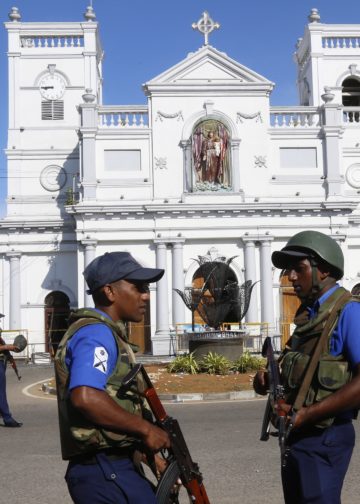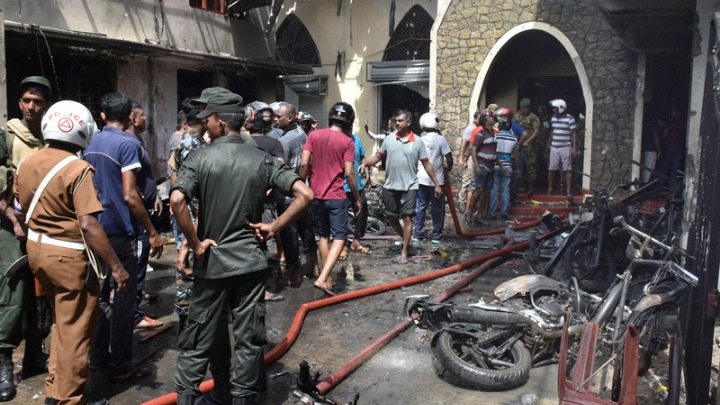UPDATE: 12:53
A local Islamic group, called National Thowheeth Jama’ath (NTJ), is behind the suicide bomb attacks in Sri Lanka, a government spokesperson said.
The Sri Lankan authorities are investigating possible foreign links with the group. The police had been alerted ten day ago, as there was information that the Islamist group was plotting attacks on churches and the Indian Embassy in Colombo.
A string of attacks on Catholic churches and luxury hotels in Sri Lanka killed 290 people and wounded 500, Sri Lankan police spokesperson said on Monday morning.
Ruwan Gunasekara, a police spokesperson, avoided giving more information about the victims of the attacks on three churches where the faithful had been congregated for the Catholic Easter Sunday mass, and on four hotels yesterday Sunday. It was the worst attack since the end of the civil war in Sri Lanka ten years ago.
Arrests
Police in Sri Lanka have arrested a total of 13 suspects, as part of the investigation carried out on the attacks, a police source reported today.
Sri Lankan Prime Minister Ranil Wickremesinghe said yesterday that eight people had so far been arrested in connection with the deadly blasts. The authorities did not provide further information.
However, the source told the AFP news agency that the suspects were arrested in two locations, in and around Colombo. They belong to the same extremist group, according to the same source.
At least two out of a total of eight attacks committed yesterday in Sri Lanka’s capital were made by kamikaze bombers, according to the police and other sources. Three police officers were killed when a kamikaze detonated the explosives during a police raid at a house where the suspected reportedly were.
Warning from the US Secretary of State
The State Department warns in a travel advisory that “terrorist groups” continue plotting possible attacks in Sri Lanka.
“Terrorists may attack […] with no warning,” the US Department of State said in a travel advisory yesterday.
According to US State Department, targets may be tourist locations, transportation hubs, markets/shopping malls, hotels, places of worship, airports, and other public areas.
SOURCE: ANA-MPA

















